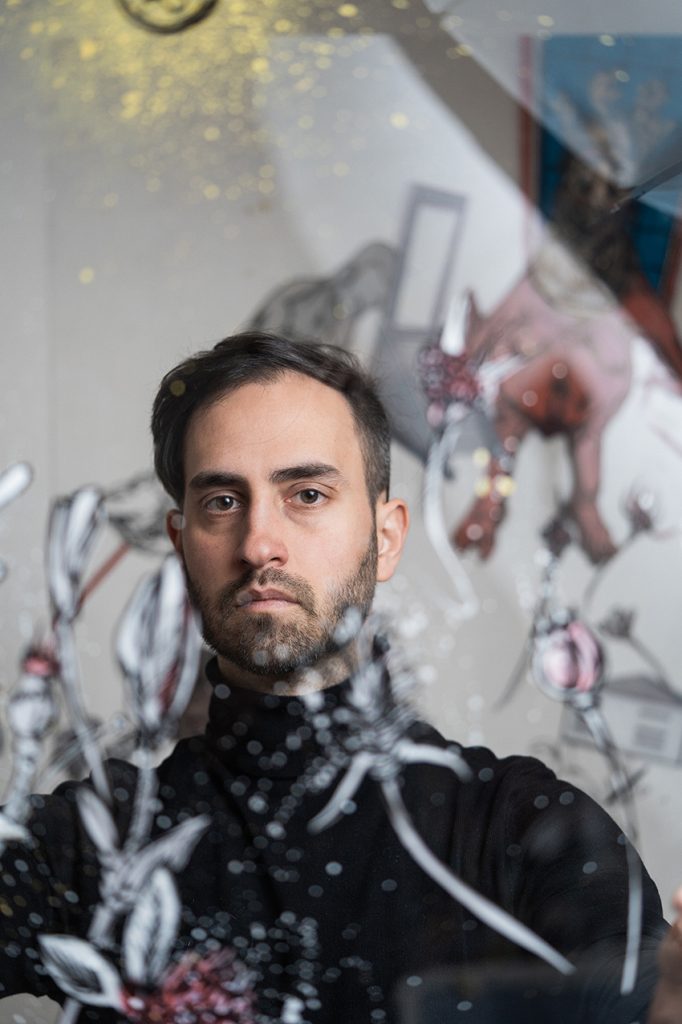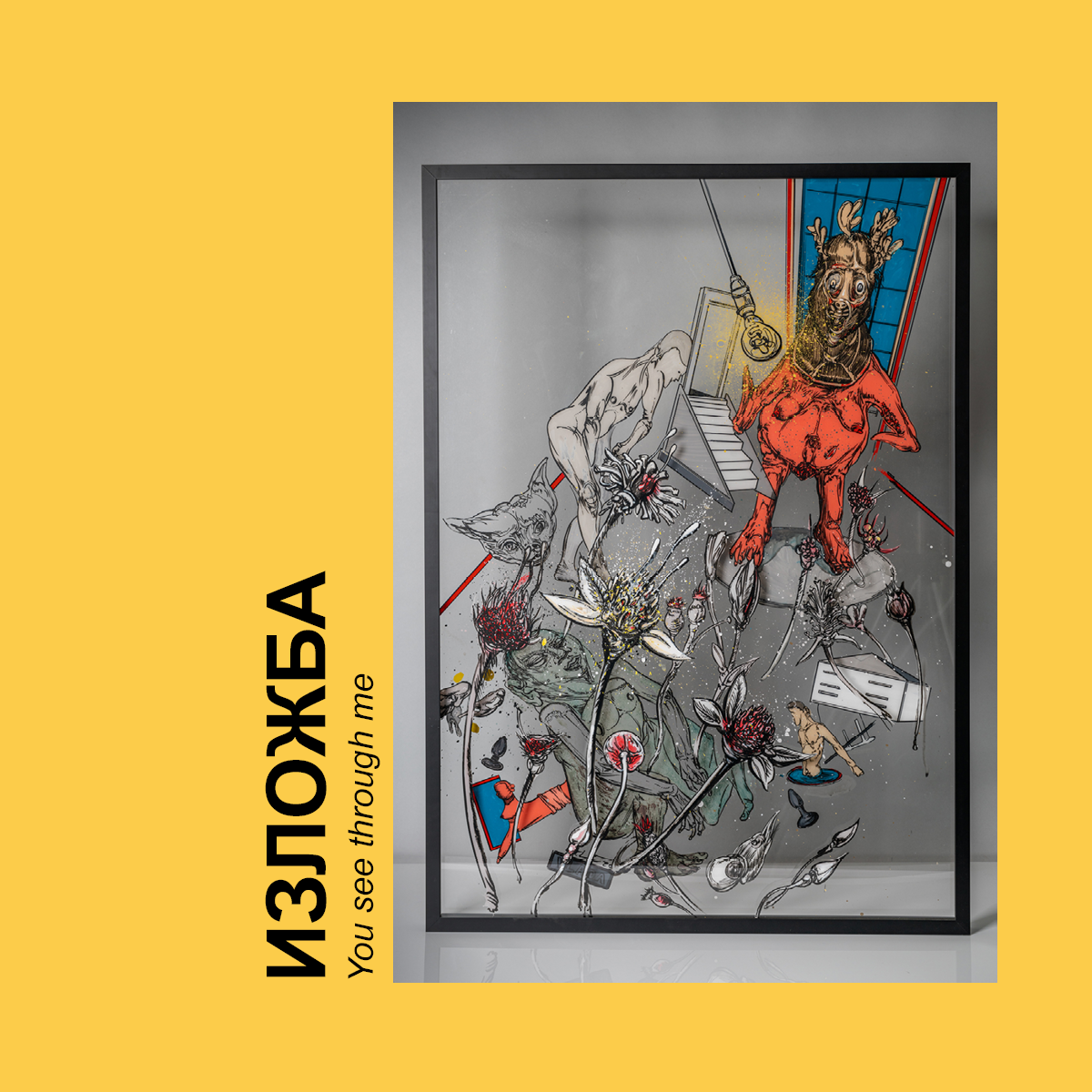
He is a renowned Serbian artist, who is difficult to classify in only one type of art. Furthermore, his works have found their place in numerous European and world galleries and exhibition spaces – Paris, New York, Singapore, etc. Now, the works created in the last two years will see the light of day for the first time, right in front of the audience in Novi Sad. It is Vladimir Lalić from Belgrade, whose exhibition ‘Voir à travers moi – You See Through Me’ will be opened in the Svilara Cultural Station tonight, 28 October at 6 p.m.
Before the opening, we talked to this young and currently one of the most successful Serbian artists who believes that ‘art will never die, it will only change forms’, about what forms he will introduce us to at the exhibition, how much art ‘suffered’ due to the pandemic and what are the consequences, whether art is an indicator of the social situation and how he sees the city that will be the European Capital of Culture, in which his works will be also presented until 10 November.

The exhibition in the Svilara Cultural Station will present your unpublished works on plexiglas. What will the exhibition include and what influenced the fact that your works will experience their ‘premiere’ in the Svilara Cultural Station, how did you choose the works for this exhibition?
The exhibition includes works made in the last two years, which are connected by the material on which I created, and that is plexiglas and my drawing and art relations to the body and the examination of the limits of humanity. Only two works are from 2018, one from 2019, and all the others were created this year, so they are fresh from the studio, full of the hustle and bustle of the present time, I would say. The selection of works went organically, on the spot. I deliberately collected more works than can fit and let the space suggest to me which work can be placed the best. The height of the ceiling, the rhythm of the white walls and the walls of brick and gray concrete, the copper pipes from the heating, make Svilara a unique exhibition space, which inspired me a lot. The aesthetics of the revitalised old factory go well with the aesthetics of my works. The niches themselves served well for four installations in the great hall, I even used metal bars that are not intended for hanging, in order to implement even more work in the space. An interactive installation is set up in the upper hall. The lighting is excellent, and I must note that Svilara’s team, led by Violeta Đerković, is professional and innovative. Everyone does a great job with a sense for important details, which are necessary for a good exhibition. When Vladimir Marinković, the director of the French Institute in Novi Sad, invited me to do an exhibition, I wanted it to be an exhibition that would premiere my recent works. This kind of endeavour is not easy, but Vladimir is very experienced in organizing events, he has a sense of visual art, and as a musician he is a colleague too, so he understands both my creative worlds. It was a pleasure to have such people on this project.
The exhibition is also interactive. In what way will the audience be able to participate?
The small hall upstairs is set aside to be in complete darkness. Visitors enter with flashlights or their mobile phones, where they illuminate the drawings on plexiglas, which hangs from the ceiling. When they are light up, the drawings are projected on the walls, creating a theatre of shadows. Depending on the movement of the light, each visitor directs his own projections. If more people are lighting at the same time, it is even more interesting since the shadows are multiplying.
How different is the audience in cities like Paris and New York and here in our country? What are we like as consumers of art?
Not so different, I would say. In our country, as everywhere in the world, there is interest in art. The phrase ‘I don’t understand art’ is more present here, but it also happens in art centres. But as soon as people break through that barrier, which is sociological, a little imposed, they usually give even bolder interpretations than in big cities. Maybe people here are more accustomed to more bizarre visual contexts. However, it is not understood here how much art a big business can be, as it is abroad. In Paris, most billboards have advertisements for exhibitions in museums and people are more aware of the offer. The biggest problem here is the buying market, which is very small.

How do you see the situation in which art and culture found themselves due to the pandemic? In your opinion, what consequences await us?
The situation is difficult, just as it is in other areas. There are hardly any conveniences for all activities dealing with public events. Since I deal with copyright music (Organized Chaos) and play in theatre plays, I can feel what it looks like on my own skin. It is definitely the most difficult for band concerts now, the whole industry is on the verge of collapse. Theatres somehow manage to organise performances with reduced capacity, and exhibitions are cancelled and made virtually. I think that all this will result in a ‘bubble’ effect on the world artistic scene. Those who are strong will become even stronger, and majority of small galleries and institutions will fall out of the game completely. But despite all the negative things, it is fantastic how artists find innovative ways to express themselves and send their message to the world. Art appeared with the birth of a conscious man and will never die; it will only change forms.
How did you ‘take advantage’ of these new conditions that the pandemic has set in the past few months? Did the situation in which the whole world still finds itself inspire you for further works, especially since you are active in various artistic fields?
I spent a period of isolation very hard, hence so many new works that I exhibit. Although I was not pro for any kind of closure, I used that time to the maximum. I react to the hustle and bustle of the world, I am not a calm type, I listen through my inner world to what is happening outside, and that influences my works. Four works from the ‘Rooms’ series were created from the sketches I did during the ‘closing’. In terms of music, I worked on the ‘Quarantine Project’ where I collaborated online with musicians I had never played with personally. The biggest problem is rescheduling events. Since March, I have been trying to open an exhibition, and the ‘Jesus Christ Superstar’ musical, in which I play one of the main roles, has been rescheduled to the next year. This shift is even more exhausting. It is difficult to just send papers. At the moment, I have some works on a group exhibition in Great Britain, and it was extremely difficult to send them.
Consequently, to continue the previous question, how crucial are art and culture in presenting social and global situation?
The task of art is always to show the current state of society. People at my exhibitions react like that, first they are a little confused, and then they say, well, yes, this is what is happening to us at the moment. And now, more than ever, we need to turn to culture, because we only turn to it when it is most difficult.
How do you see the title of the European Capital of Culture that Novi Sad carries, how important do you think it can be not only for the city that holds the title but also at the national level, and do you think that Novi Sad is really the capital of culture?
It is a very important title, and for now it seems to me that Novi Sad carries it well. Every time I come to Novi Sad, I fall in love with the city again. It is always a refreshment from Belgrade, where I was born. Novi Sad should use this opportunity to the maximum, it is on a good path and I cannot wait to see how it will all develop. The most important thing is to bring as many foreigners as possible and network artists, curators, investors and art lovers.
The ‘Voir à travers moi –You See Through Me’ exhibition will be open until 10 November, within the cooperation between the French Institute in Novi Sad and ‘Novi Sad 2021 – European Capital of Culture’ Foundation.
The organisers ask all visitors to adhere to all measures in order to preserve their health and for better enjoyment of cultural content. Visitors are required to wear protective masks at all events. The maximum number of visitors indoors is controlled at all times. The organiser keeps the right to change the maintenance of the programme and the format of events due to change of epidemiological measures.
